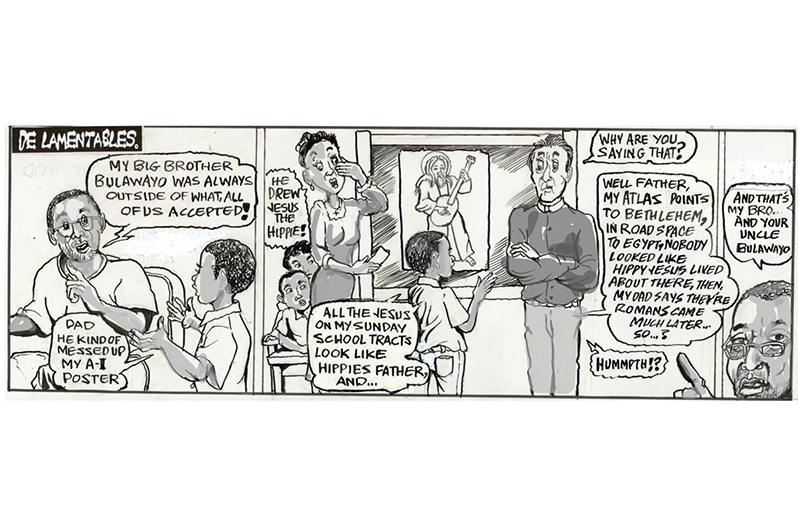The adoption of the Hebrew text, copied from the Khemetic records that were attached to the later writings that revolved around the maa´Kheru, the ‘Truth speaker’ the Khemetic name for the ‘Christ’ was then merged with the former to become the ‘Bible.’ This adopted religion by the former Romans was then used to eliminate paganism in Europe in the effort to create the nations of Christendom under Roman rule, eventually identified as the Byzantine empire. The term ‘Christians’ was the name that the Roman Emperor Constantine attributed to the Faith-believers (void of idols) that he encountered, and was later impressed by these same believers of a ‘foreign faith’ that his empire offered in the arena to be devoured by likewise foreign animals; it is believed that Constantine’s faith was especially infused, after the martyrdom of the Theban Mauritius of Aganaum, who knew this faith in his African homeland and refused to slaughter its believers; in time this martyr would be called Saint Mauritius. This first paragraph is an introduction that would need beyond this article to relate in detail, but is intended to provide a basic understanding of how religion played an active part in the Trans- Atlantic-slavery that developed Europe and the Americas.
Christianity and Islam were fashioned to allow the inhuman exploitation of so-called Heathen peoples, the destruction of American civilizations of that period and the African slave trade were stipulated by Holy men as justified, likewise were the common savagery of the Spanish inquisition, the conquistador era and slavery. Now, to the early plantation existence of the Dutch 18th Century colonies of Essequibo, Berbice, and Demerara, and comments on religious life. Dr. MC Gowan quotes the British physician George Pinckard, who noted, “The total neglect of sacred ordinances …prevails in these colonies. All the ceremonies of the Sabbath were utterly disregarded. No church or temple is to be found in the settlements … Sunday, it is true, has been set apart as a day of rest, but no solemn ceremony marks it as the Sabbath. Idleness and merriment alone distinguish it from the other days of the week” – A SURVEY OF GUYANESE HISTORY A COLLECTION OF HISTORICAL ESSAYS AND ARTICLES BY A GUYANESE SCHOLAR – Dr. Winston Mc Gowan.
Pinckard continues, “ Christmas… is a holiday to the slaves who usually receive some indulgences of food, and some present of clothing to augment the happiness of the festival. We have seen new hats distributed among the men of a whole gang and a bit of course canvas for a petticoat given to each of the women, and never were children more delighted with toys as these poor beings were on the joyous occasion of receiving these humble, but to them splendid offerings. Some fresh meat was also served out to them as a high feast for dinner.”
 The slaves were also encouraged to visit other plantations where friends, relatives, lovers and fellow passengers who had made the forced voyage into slavery were confined to, and dances were allowed. This was encouraged with the intent to humanize slavery, to minimise the pent-up anger of the slave by the weighted burden of the cruelty of the slave system, in the hope that it would curtail slaves running away, rebellions and other forms of sabotage against the plantation. But when it came to establishing the church and teaching literacy in the English context, this was a different development, as it implied a new level of shared awareness and the resuscitation of deeper cultural memories.
The slaves were also encouraged to visit other plantations where friends, relatives, lovers and fellow passengers who had made the forced voyage into slavery were confined to, and dances were allowed. This was encouraged with the intent to humanize slavery, to minimise the pent-up anger of the slave by the weighted burden of the cruelty of the slave system, in the hope that it would curtail slaves running away, rebellions and other forms of sabotage against the plantation. But when it came to establishing the church and teaching literacy in the English context, this was a different development, as it implied a new level of shared awareness and the resuscitation of deeper cultural memories.
“In the 1790s, there were no Church buildings, but with the rise of British influence, some services were conducted on Sundays by the chaplain of the British Garrison in a small room in the courthouse in Stabroek, likewise with the Lutherans in Berbice and the Dutch-reformed church in both colonies. The Anglicans catered exclusively for the minority white population. They prohibited slaves from attending services for fear that exposure to Christianity would make them more discontented and rebellious.” This fear was based on the content of the scriptures that revolved around the liberation of slaves through divine guidance and human participation.
Also, the authority of the Mosaic law – Exodus 21:16 – implied that, “ A man who steals a man and sells him to another must be put to death,” etc. The Congregational Church did make a difference (The Protestant denominations ). The 1823 non-violent protest, to which this year is the Centennial Commemoration of that tragic event, of which so many lost their lives upon the whims and psychotic fantasies of Colonel Thomas Leahy, John Croal and Michael Mc Turk {a trickster}. The latter was knighted not for his support of random executions in 1823, but for the fiction he after created towards his legacy. Activists of this centennial must possess a copy of Thomas Harding’s ‘White Debt’ and da Costa’s Crowns of Glory…, along with themes of Afro-Guyanese history.
The indoctrination into Christianity after emancipation, of the colonial British subjects did not revolve around the work of the protestants, but with the colonial advertising campaign towards economic interests that followed the Industrial Revolution, with the scramble for Africa; “If every negro in the Congo bought one Sunday dress (Church clothes) and four everyday dresses, it would require 3,840 million yards of Manchester cotton, worth 16 million.” Sir Henry Morton Stanley- ‘The Scramble for Africa by Thomas Pakenham’.



.jpg)








